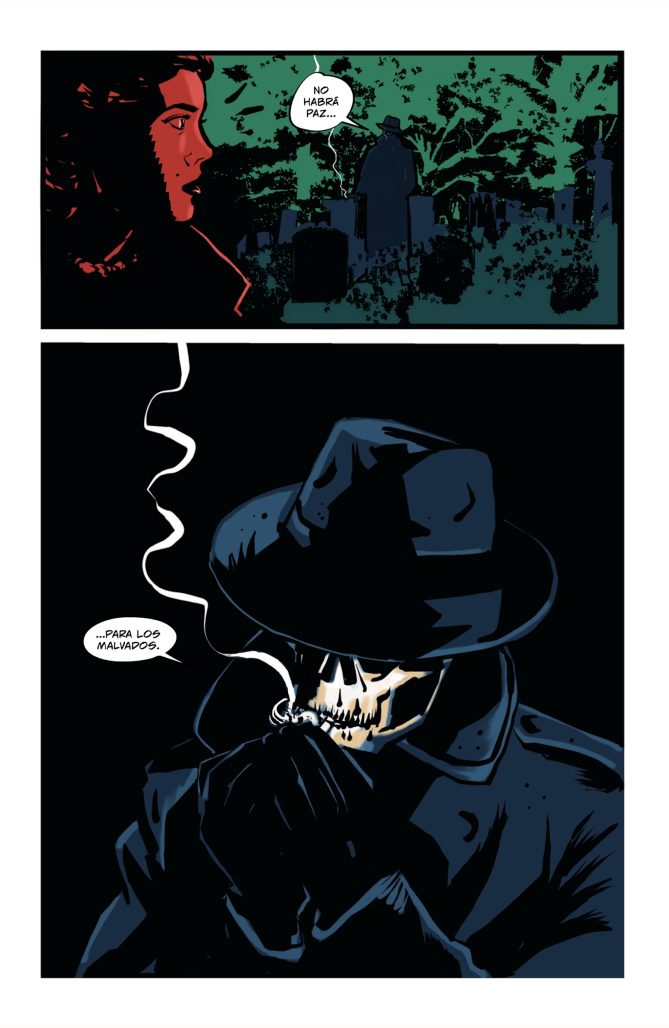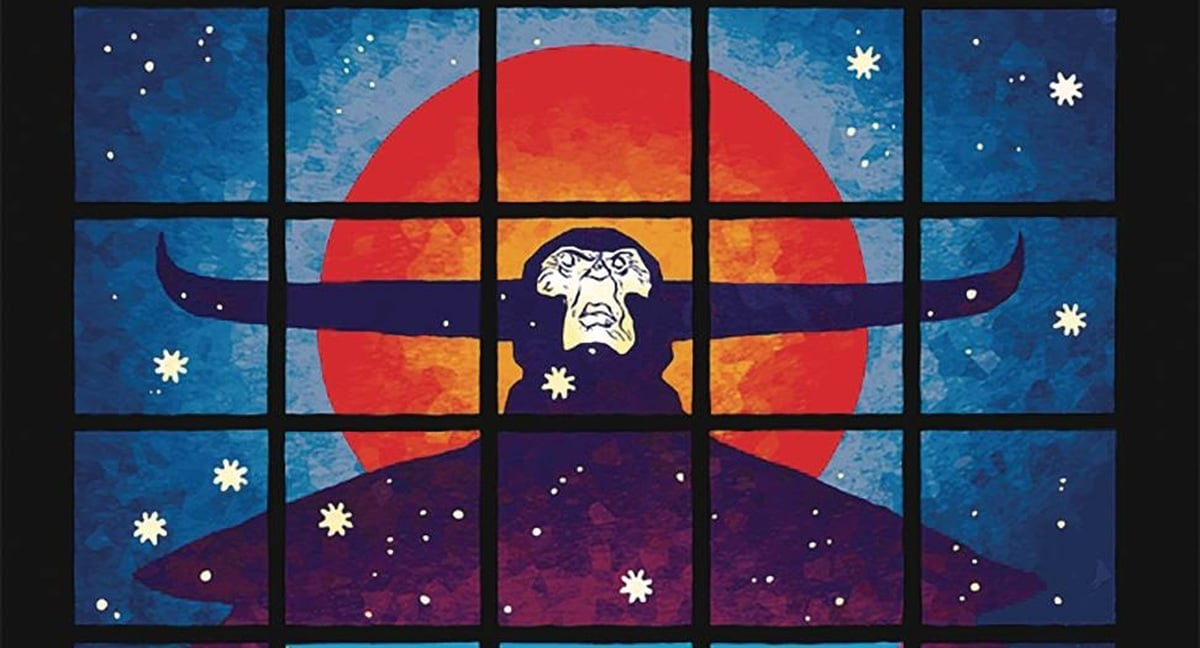If you’ve ever seen a classic Mexican horror movie—be it the 1933 version of La Llorona, Carlos Enrique Taboada’s 1968 ghost film Hasta el Viento Tiene Miedo (Even the Wind is Afraid), or one of the many El Santo movies—you’ll know they love taking ideas from every genre or medium available to them and then making them their own. Terror elements become intertwined with telenovela sensibilities only for comedy to sneak in whenever it becomes necessary to cut a bit through the tension for something scarier later on. It’s all wrapped around something Latin America literature excels at: magical-realism, a storytelling tradition that treats magic as status quo without having to offer much explanation for the weirdness.
Marco Finnegan’s latest book, Calavera, P.I., is a great example of this beautiful clash of styles and narrative techniques. Written, illustrated, and colored by Finnegan, the comic follows the titular investigator after he dies while working his final case in the land of the living. He comes back as a phantom of justice on the Day of the Dead to take on a kidnapping case a former colleague is working on.
Calavera, P.I. takes place in 1920s Hollywood, at a time when crime only had white detective heroes and suspects often centered on Mexican immigrants and Chicanos just because of the discriminatory associations forced upon them. The script is flipped here. The hero is Chicano, and his brand of justice focuses on the wrongs that have affected his community ever since the Europeans colonized the area (namely, sex trafficking).
Finnegan has the enviable talent of being able to work with different tonalities of horror and atmosphere to give specific sequence multiple dimensions of meaning and emotion. His work in The Keeper, for instance, which was scripted by Tananarive Due and Steven Barnes, is a great showcase of this. The scarier aspects of the story are kept quiet to help build on the darker things that haunt its characters. It’s a subdued approach that knows when to unleash the uglier things in his repertoire for maximum terror.
The Beat corresponded with Finnegan to talk all things Calavera, P.I. and what it means to finally see a passion project such as this come to life.
RICARDO SERRANO: Calavera, P.I. feels like the type of story that’s just been sitting there for years waiting to be let out. What made you go with the idea now?
MARCO FINNEGAN: I feel the same way! Honestly it was just one of those ideas that clicked one day. I had wanted to do a Chicano Noir and was looking for a “ticking time bomb” storyline, something that had a finite timeline to finish the case. The Dia De Los Muertos bit just made sense. I think in the current climate a lot of the themes in the book are (unfortunately) very relevant.
SERRANO: You have the rare ability of illustrating very nuanced horror (as is the case in The Keeper) just as well as more in-your-face horror with monsters and creatures, which often get dedicated panels that reveal the horror in full detail. And yet, they all seem well-grounded, easy to imagine in real life. How would you best describe your approach to horror and your preferences when it comes to illustrating it?
FINNEGAN: Thanks! I think this comes from just trying to make the “worlds” consistent. I think a lot about how Mignola works and creates these blue collar monsters, that’s the touchstone for me. I love stories where the supernatural co-exists with the real world—James Lee Burke does this well in his crime fiction too!
SERRANO: There’s great care given to the Chicano aspect of the story, especially when it comes to concepts of justice and recognition. What did you want to get across with this aspect of the story?
Finnegan: One thing that editor Gabriel Granillo and I wanted to do was to have L.A.’s Mexican community be an integral part of the world. The places and locales in the book are real and still can be visited. The blaming of Latinos for anything/everything is a very real thing. So putting a spotlight on that history was important because it was really happening at the time. We also wanted to avoid “trauma porn”—this is not a story just focusing on strife but celebrating the culture that has and continues to be woven into the DNA of the city, especially since it has historically been erased in popular culture.
SERRANO: Were there any movies, books, or comics that you found inspiration from while working on Calavera, P.I.?
FINNEGAN: Oh man…so many! I think the main influence was Hammett‘s Continental Op. I think of Calavera as a blue collar guy: this is what he does, it’s what he’s good at. The Op is the same kind of detective. In terms of aesthetic I watched Joseph Losey’s M remake continuously because of how he uses the city as a character. And it has some great footage of Bunker Hill.
SERRANO: What do you have planned for the near future? More Calavera cases?
FINNEGAN: I really, really hope so. I think we have just scratched the surface and have many more ideas and places in time to take him. Fingers crossed!

























 English (US) ·
English (US) ·